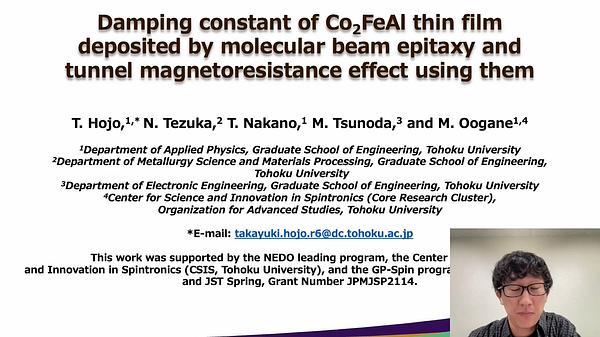
Premium content
Access to this content requires a subscription. You must be a premium user to view this content.

technical paper
The Detection Limit of an Open Source Magnetic Particle Spectrometer
Magnetic particle imaging (MPI) utilizes the nonlinear magnetic response of superparamagnetic iron oxide nanoparticles (SPIONs) for applications such as cell tracking,
neuroimaging, and targeted hyperthermia. As SPIONs are central to MPI, understanding their properties is critical. A magnetic particle spectrometer (MPS) is often used to asses the
SPIONs’ magnetic properties. Despite MPS’s utility in facilitating MPI research and nanoparticle chemistry, among other uses, there are limited commercial MPS devices and few
comprehensive open-source resources on their construction and use. Here, we report the detection limit of an open-source MPS device 1.
Methods:
Sensitivity limits were determined from an 11 phantom dilution series, each 4 μL of Synomag-D 70nm (Lot:16321104-02, Micromod Partikeltechnologie GmbH, Germany).
Samples were placed in the apex of a microcentrifuge tube, ranging from undiluted (6 mg Fe/mL) to 0.98 μg Fe/mL. For each, we acquired three data-sets with 40 acquisitions (sinusoidal
drive field, 10 mT, 23.8 kHz, 29 ms) with the sample in and 40 with the sample out. The mean of sample-in minus sample-out signal was plotted against SPION mass and fit using a linear
regression. The detection limit was defined as the Fe mass at which the regression intercepted the standard deviation of the sample out acquisitions. We repeated this analysis for the 3rd,
5th, and 7th harmonic component of the signal.
Results: The measured detection limit is 1.3 ng (fit R2=0.999) for the 3rd harmonic component of the signal, 4 ng for the 5th harmonic, and 7 ng for the 7th.
Discussion:
This open-source MPS device is relatively cheap and simple and has a sensitivity comprable or higher than other similar systems 2, 3, 4. Iron laden cells carry roughly 50 pg
per cell 4, thus we anticipate this detection limit to correspond to about 26 cells for those studies. Further, as the acquisition is only 29 ms per sample, and minimal sample preparation, it
is well-suited for synthesis process validation.
References
1 E. Mattingly, E. E. Mason, K. Herb, M. Sliwiak, K. Brandt, C. Z. Cooley, and L. L. Wald. OS-MPI: An open-source magnetic particle imaging project. International Journal
on Magnetic Particle Imaging, 6(2):1–3, 2020.
2 M. Graeser, A. Von Gladiss, M. Weber, and T. M. Buzug. Two dimensional magnetic particle spectrometry. Physics in Medicine and Biology,
62(9):3378–3391, 2017.
3 N. Garraud, R. Dhavalikar, M. Unni, S. Savliwala, C. Rinaldi, and D. P. Arnold. Benchtop magnetic particle relaxometer for detection, characterization and analysis of magnetic
nanoparticles. Physics in Medicine and Biology, 63(17), 2018.
4 N. Loewa, F. Wiekhorst, I. Gemeinhardt, M. Ebert, J. Schnorr, S. Wagner, M. Taupitz, and L. Trahms. Cellular uptake of magnetic nanoparticles quantified by magnetic particle
spectroscopy. IEEE Transactions on Magnetics, 49(1):275–278, 2013.


